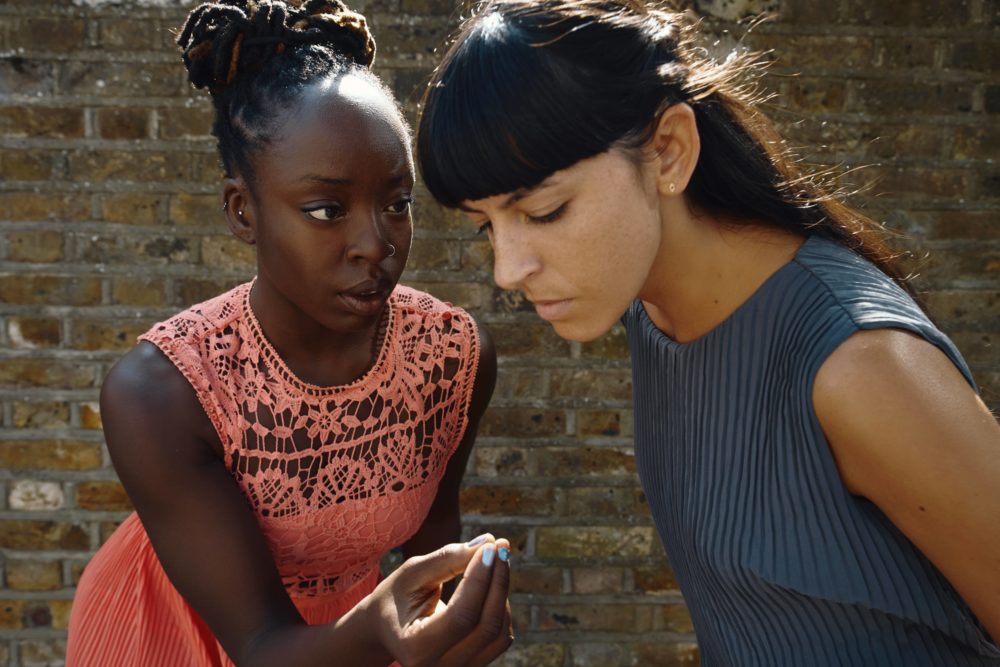Wild Card is a unique opportunity for new generation of dance-makers to curate special evenings and present works from emerging choreographers and dance companies.
Originally from Italy, Gianluca has performed, taught and directed dance throughout the UK, Europe, Asia and USA since 1997. He has been the artistic director of VERVE from 2011-2016 and the head of professional development from 2014-2016 at Northern School of Contemporary Dance in Leeds.

You have worked with dancers and choreographers all across Europe; did you find many differences in the way dance is created in different countries?
Absolutely! I believe is due to the history of each country and their environment. If I think about Iceland and Italy, for example, I think their aesthetics are at their antipode. Italian dance feels a lot more traditional in the approach and aesthetic, however, with the new generation of artists, things are changing, possibly due to the fact that culturally there is more exchange. A lot of Italian dance artists are now training abroad. In Iceland, dance felt more grotesque and gutsy. It always feels connected to the landscape. It also has a clear bond with music.
I also remember a very different approach to dance training and choreography whilst I was travelling through the USA East Coast with Iceland Dance Company and in Taiwan while I was in residency at the Taipei Artists Village. I remember thinking that the dancers approach to training felt very close to those of gymnasts and the choreographic approach was more commercial; but of course I can only generalise about it, perhaps I was only exposed to that kind of vocabulary.
At Wild Card you introduced your dance company, Möbius Dance, with Encounter One – a short dance film and a structured improvisation in collaboration with musician Otis Jones and artist Ben Skinner. What inspired you to create this piece?
It was a combination of things. Mainly thought from the need to breakthrough from what felt “entrapment” and the everyday routine. I wanted to create a project that was “mine” and be able to offer freelancers in Leeds an opportunity to work. It was a challenge to fundraise and involve the community but it brought us together. Generally I don’t like to work in isolation so to dive back in the freelance scene to support and feel supported by the fellow colleagues was very rewarding.
Your Wild Card featured works from three emerging dance makers: Carlos Pons Guerra (DeNada Dance Theatre), Crystal Zillwood and Jamaal Burkmar. Can you tell us a bit more about Carlos’ O Maria and the use of a leg of ham as recurring symbol in his works?
O Maria is, quite literally, a divine comedy of ham and bondage! It is a kitschy kitchen drama set in 50’s Seville, a time of suffocating Catholicism, and tells the story of a religious nymphomaniac, her tightly bound husband (who dreams of being a woman), and the stellar apparition of a hairy-legged Mother of God. Through the work, Carlos explores the effects gender impositions have on people. Its protagonist- the Virgin Mary- is a very clear example. A woman that wasn’t asked if she actually wanted to be the mother of God and a symbol of purity and chastity for centuries to come- it was just kind of announced that she would be. Historically, the Madonna has been an imposed role model for women in Western society- yet an impossible one to follow, as immaculate conceptions don’t happen often. What does this say about expectations on women? He plays with these concepts and a few more through a very melodramatic and absurd scenario, cross-dressing and yes, a leg of ham. The ham- Fernando, as the company calls it- is a real leg of Iberian ham that plays a central role in my Ham and Passion triple bill, of which O Maria is a part of. It represents many things- in one work, it represents the nationalist, Catholic character of Spain, and actually plays the role of the corpse of a drag queen’s Fascist and abusive lover; in another work it is a phallic symbol that represents the Spanish macho, with its greasy, coarse skin and heady yet delicious odour. In O Maria, it represents the flesh, that oily, mouth-watering temptation that can so often lead us astray to many interesting places.
Evolutio is the only solo performance of the evening. What can you tell us about Crystal’s work?
It is an intimate work. However, Crystal is a very generous performer and very capable of taking the audience in her world so that one feels less lonely. I have seen Evolutio few times now, it captivates me each time.
You’ve worked with winner of the 2015/16 New Adventures Choreographer Award Jamaal. Do you feel he has developed since winning?
Since winning the award Jamaal has worked in different professional contexts, which I think has helped him to find clarity in the movement vocabulary he produces and improve the way he communicates with dance artists which are new to his aesthetic. I definitely think that his artistic voice has become clearer.
Wild Card took place at the Lilian Baylis Studio at Sadler’s Wells on 23rd & 24th November


